
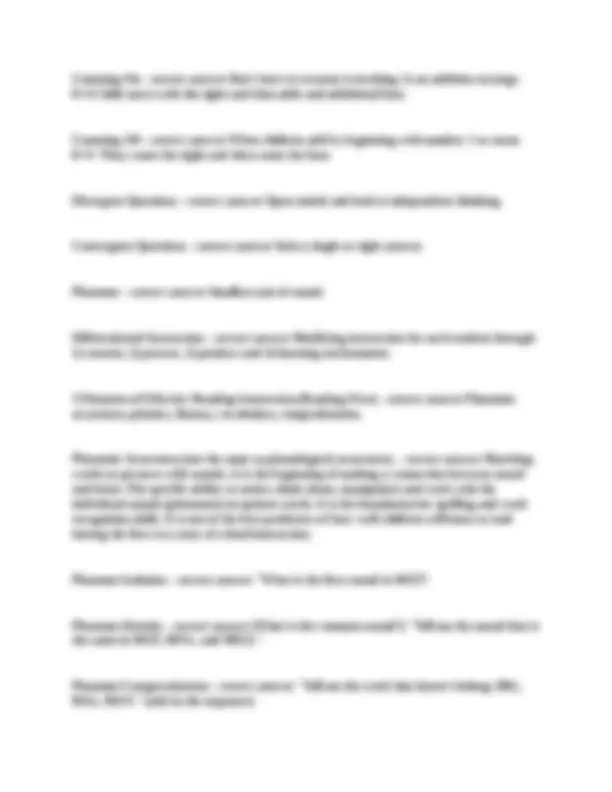
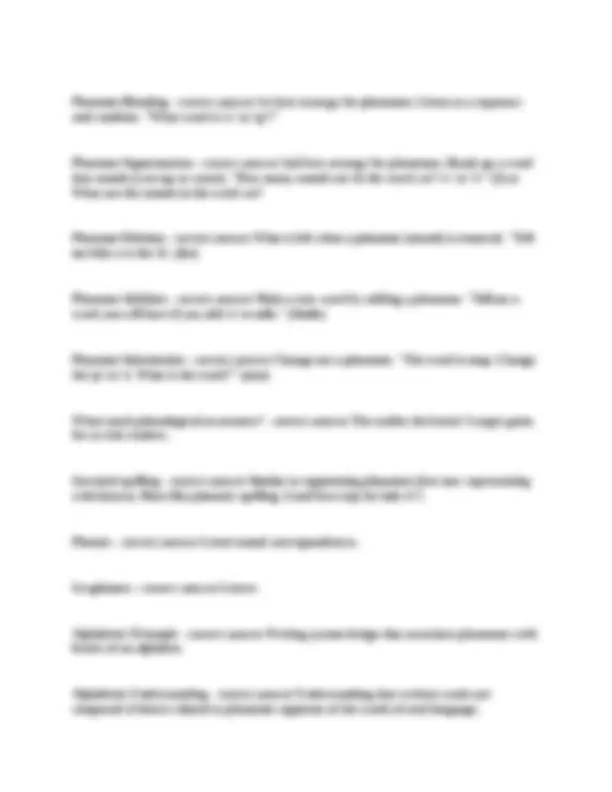
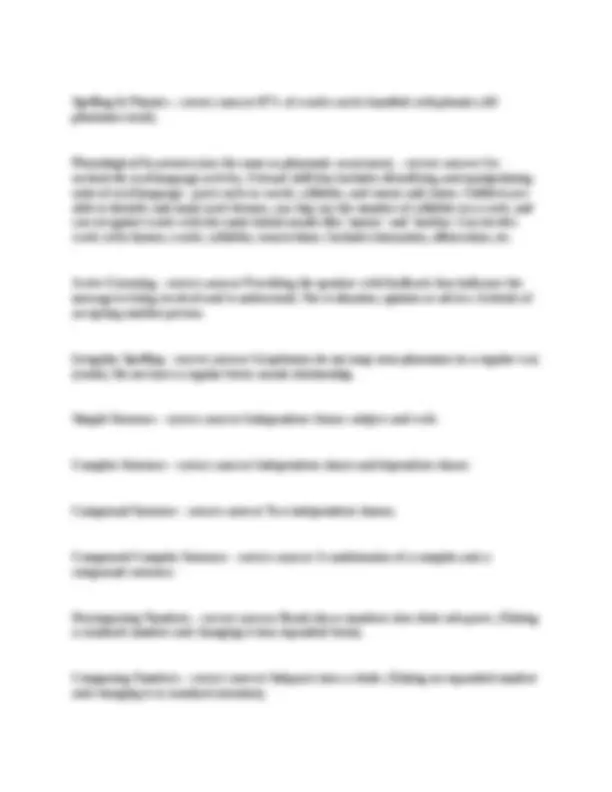
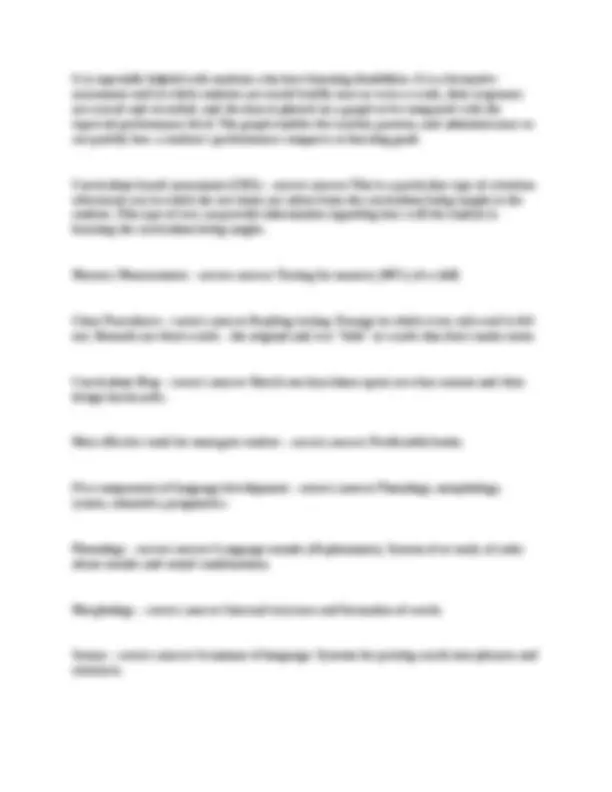
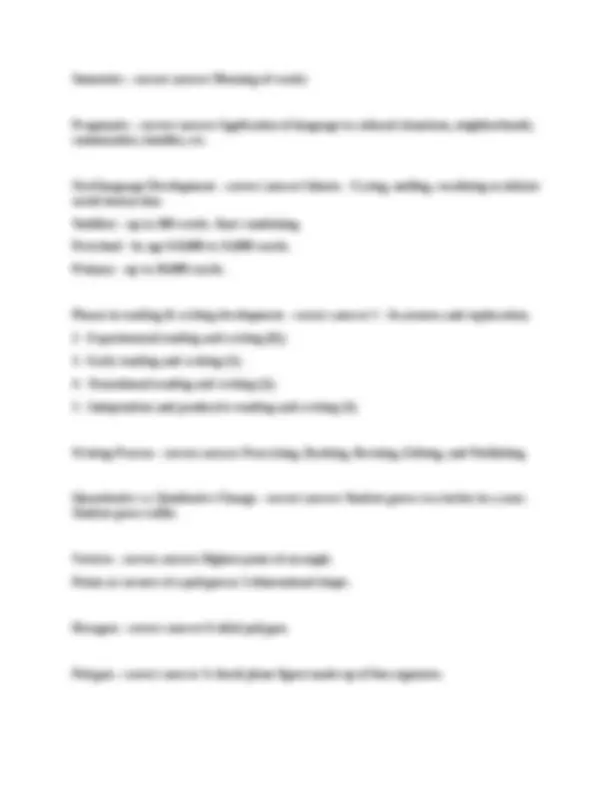
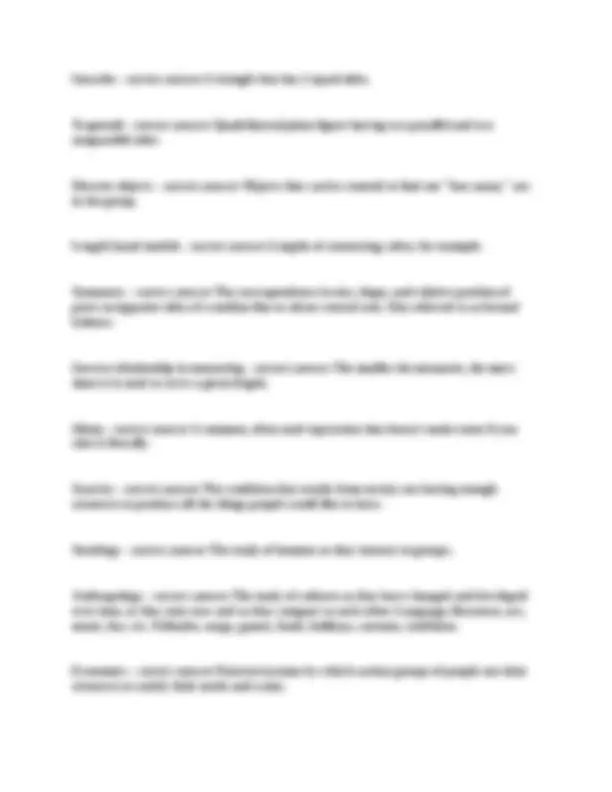
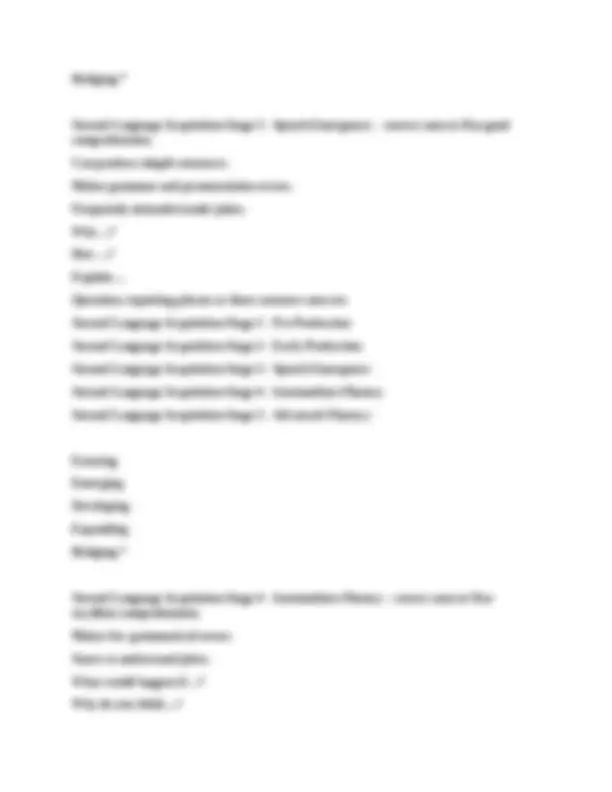
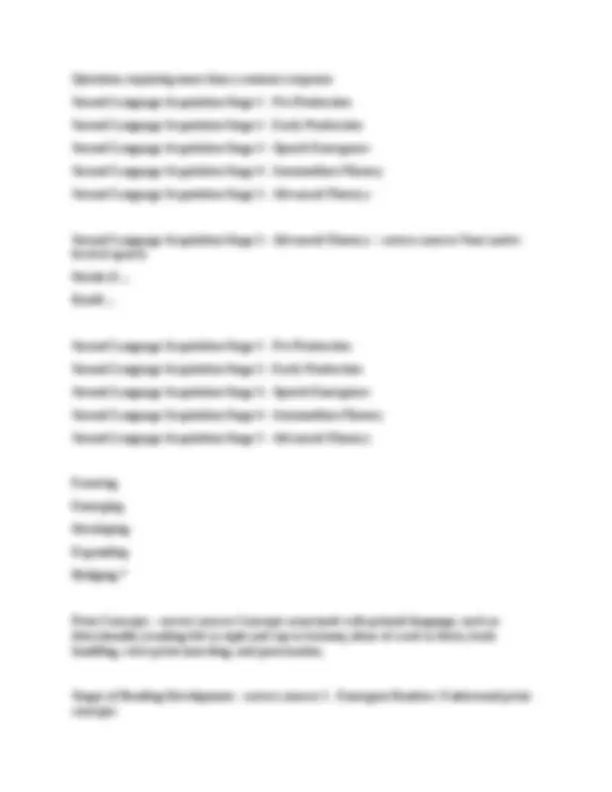
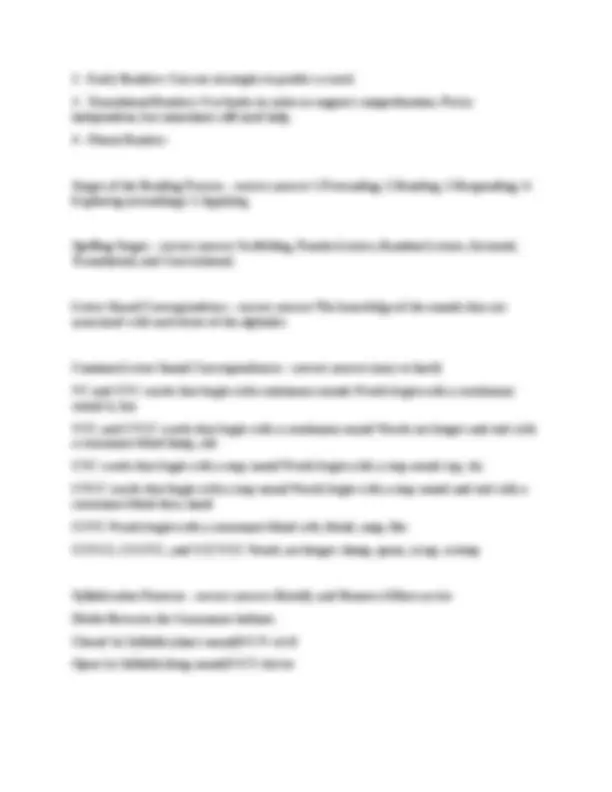
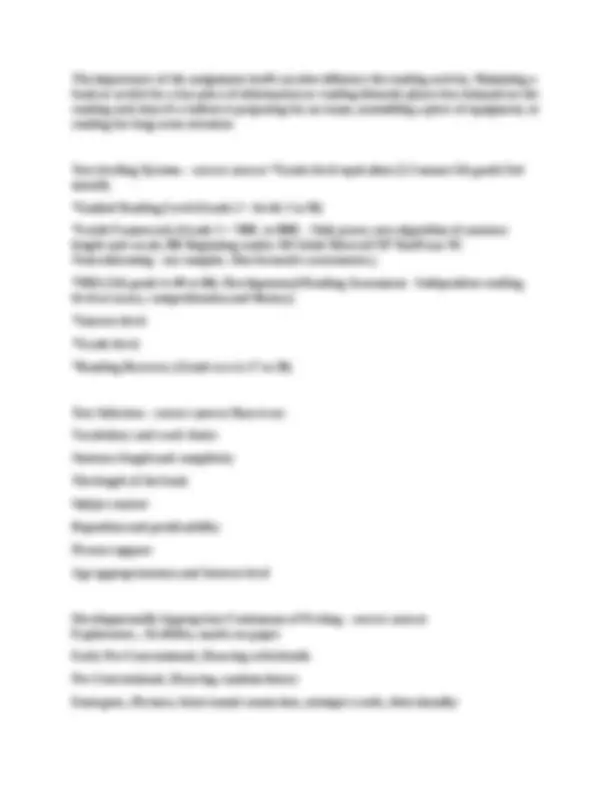
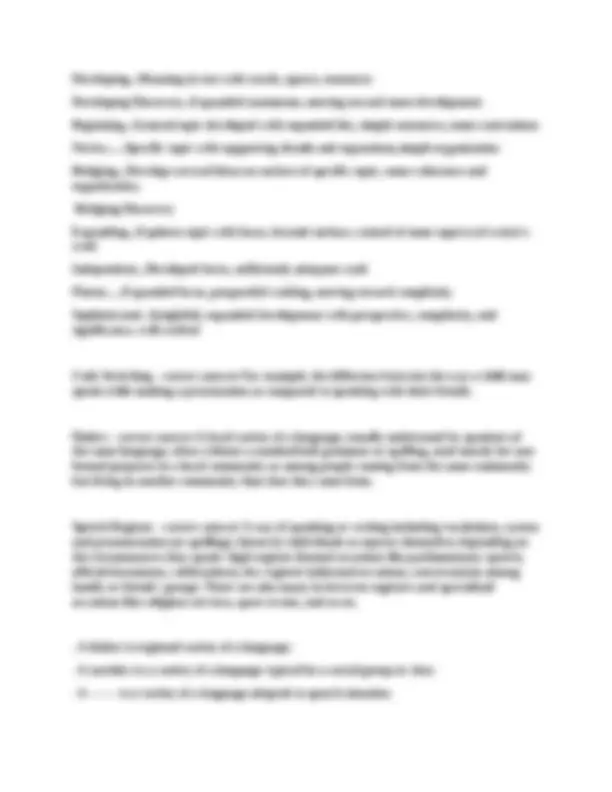
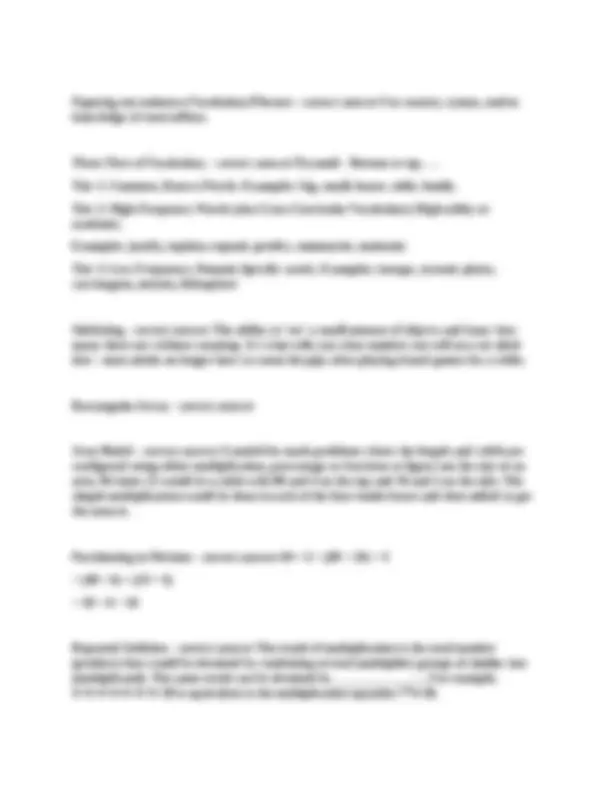
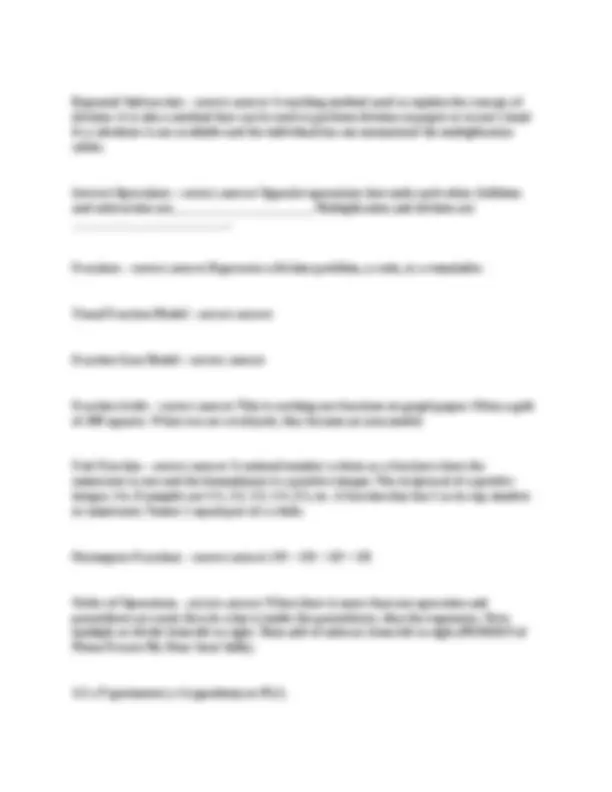
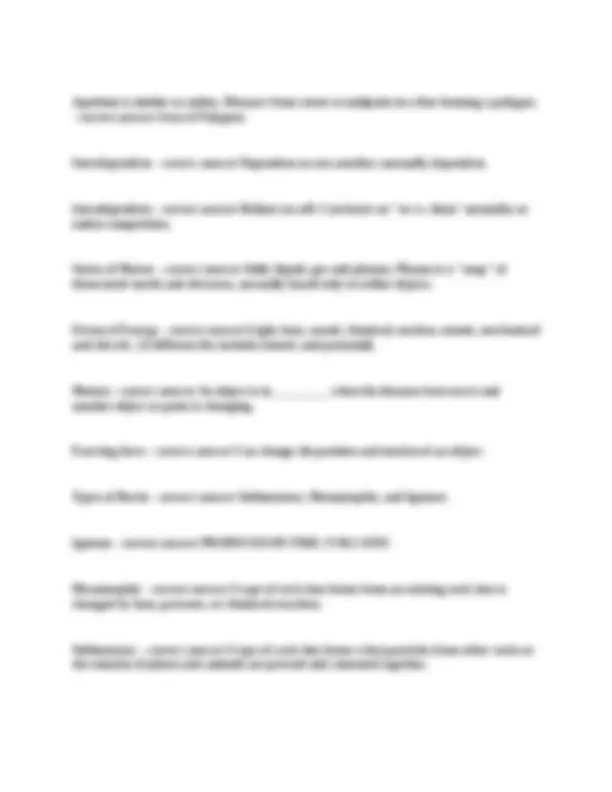
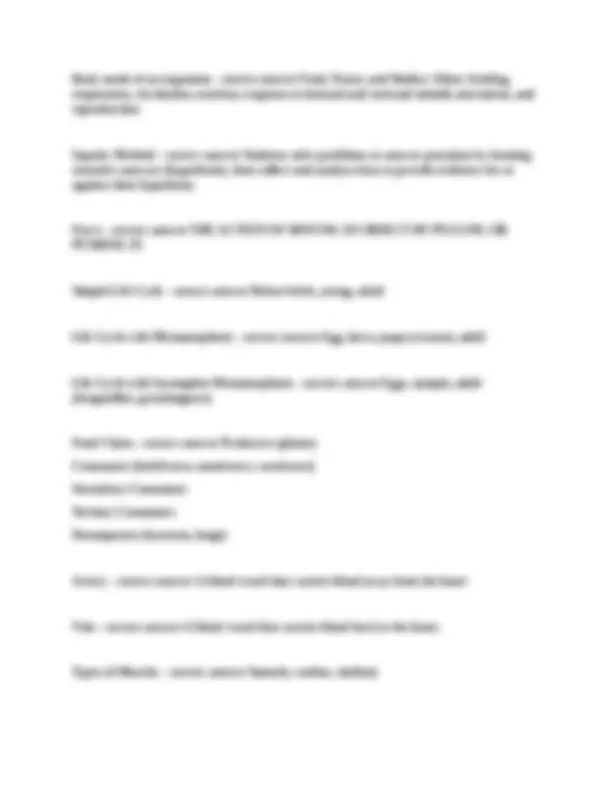
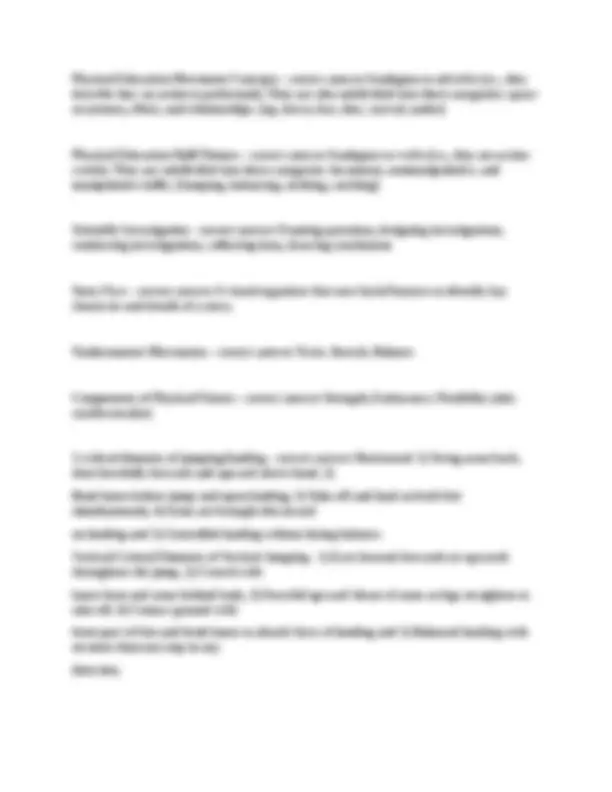
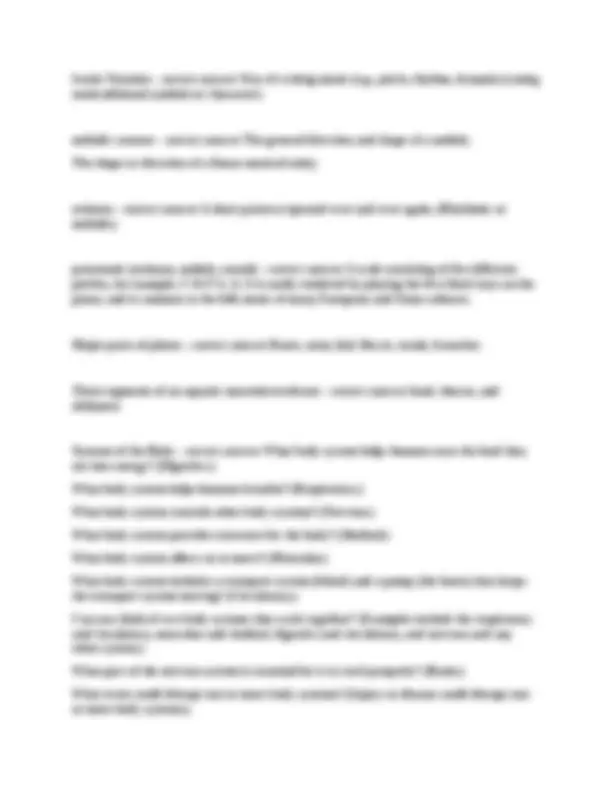
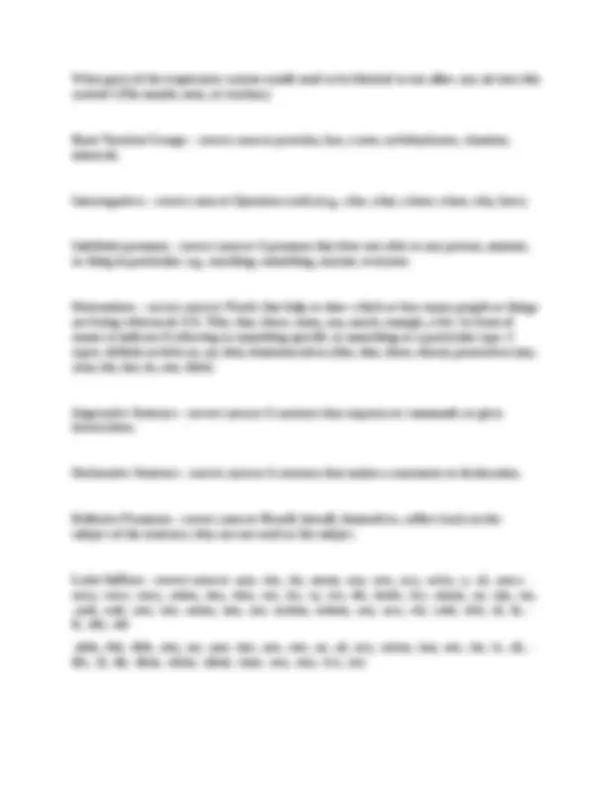
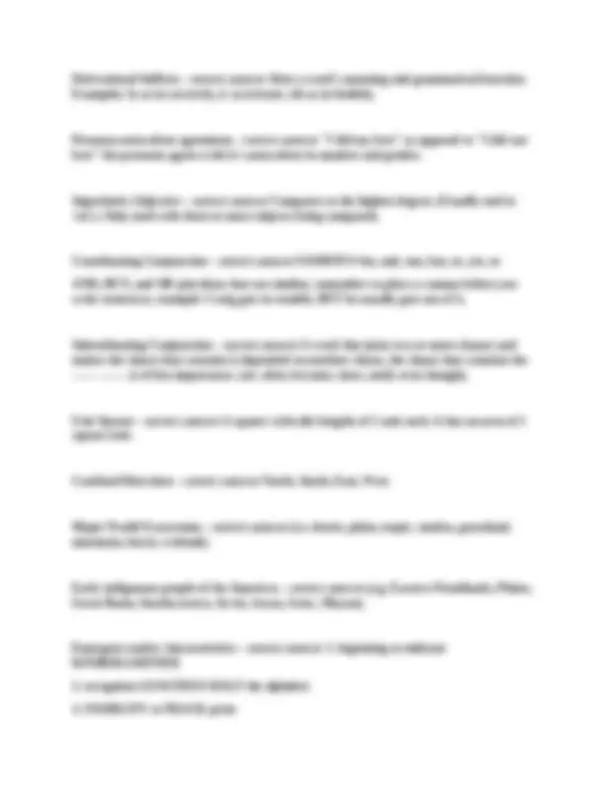
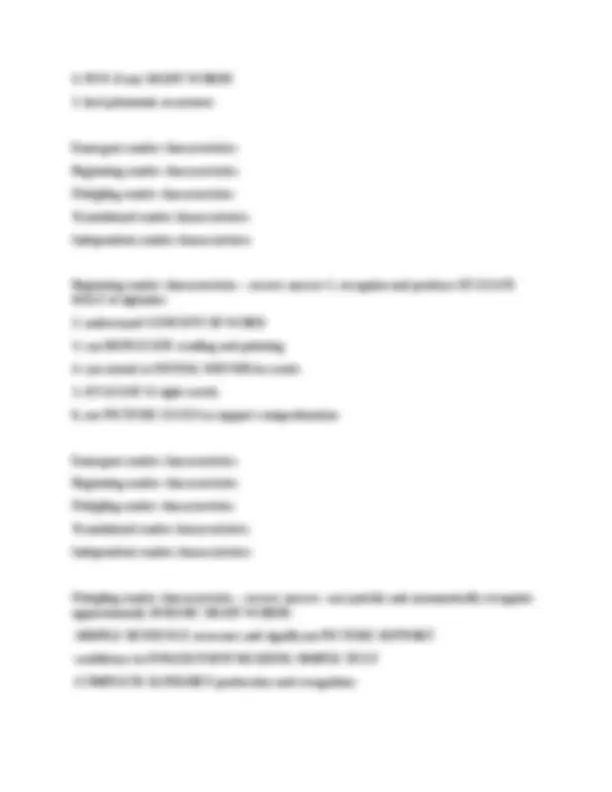
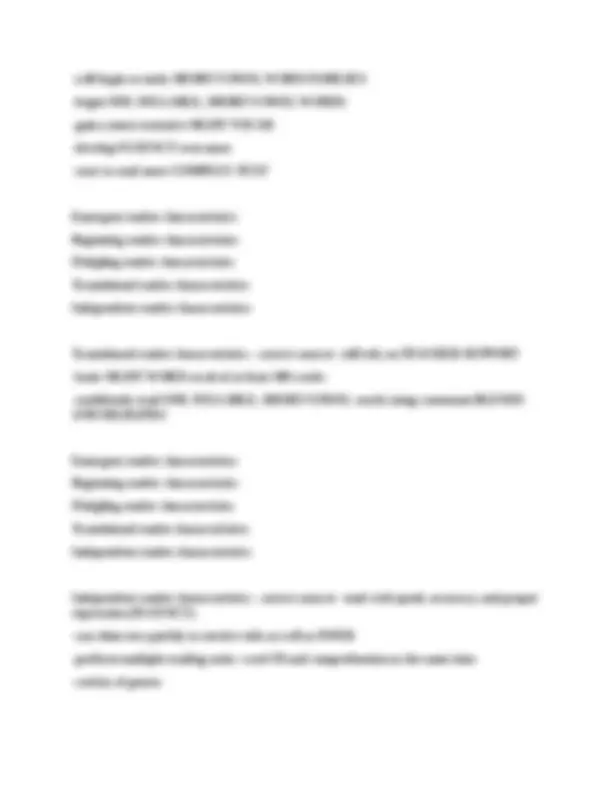
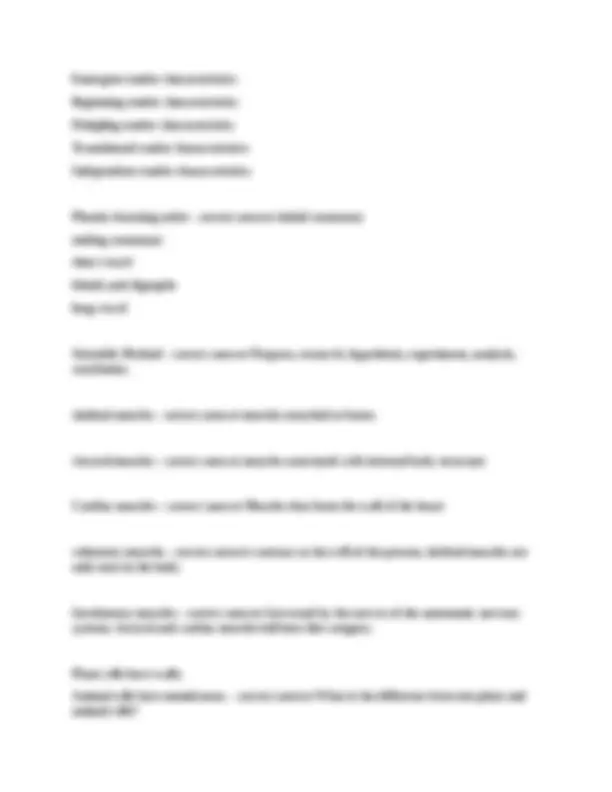
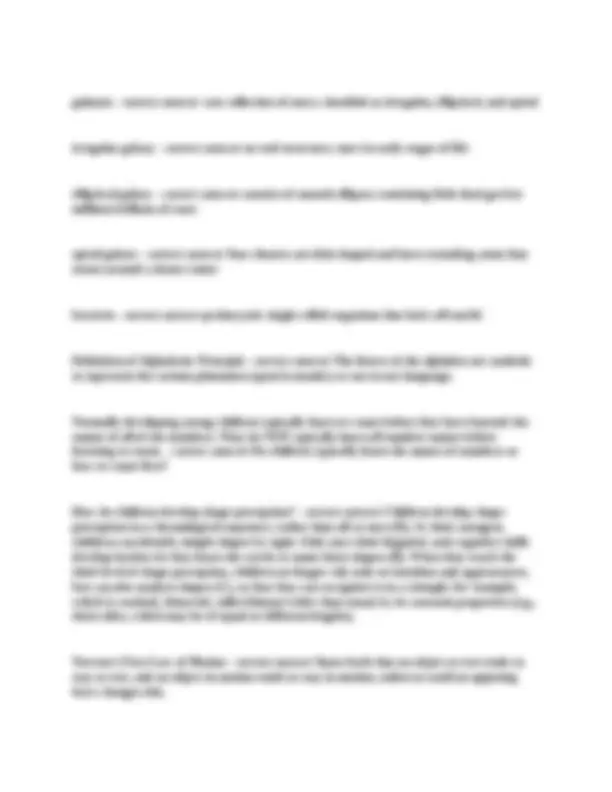
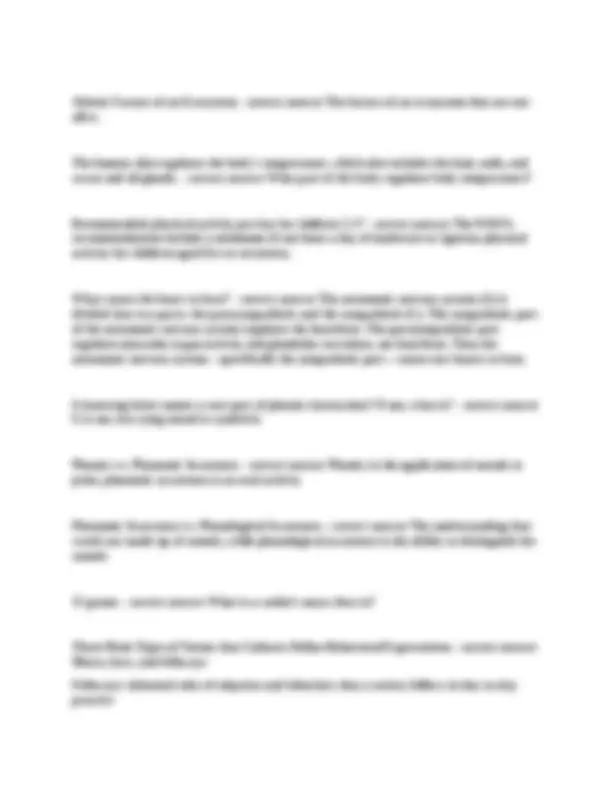
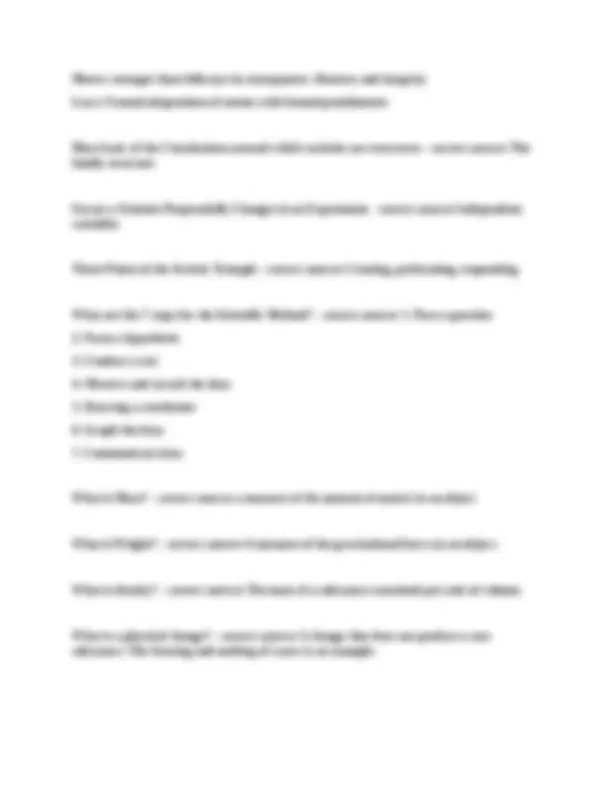
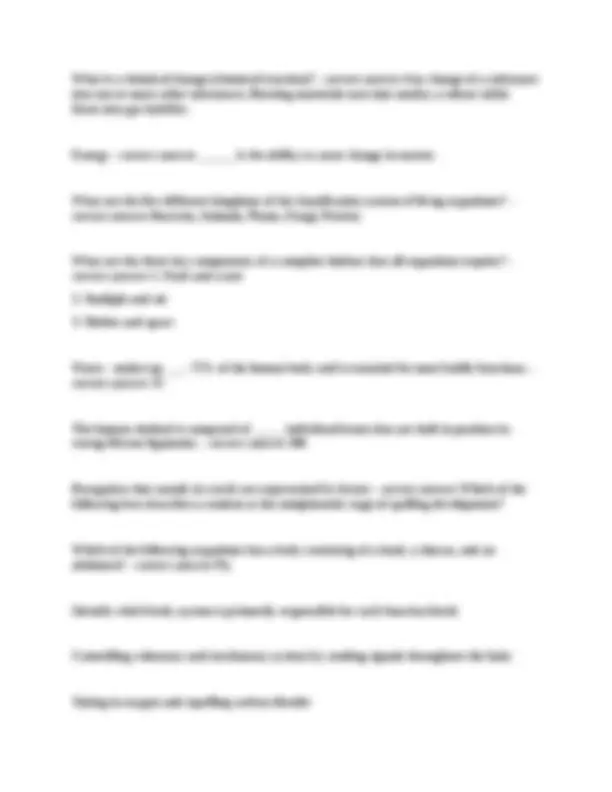
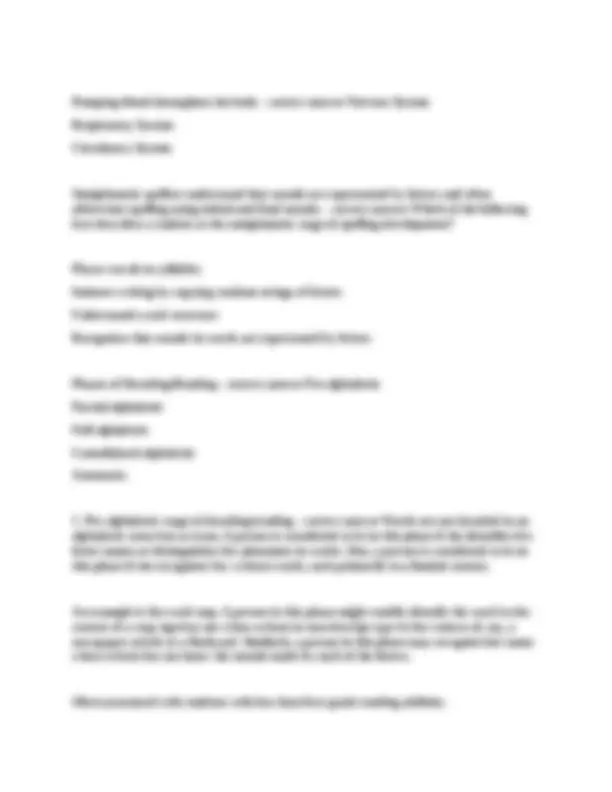
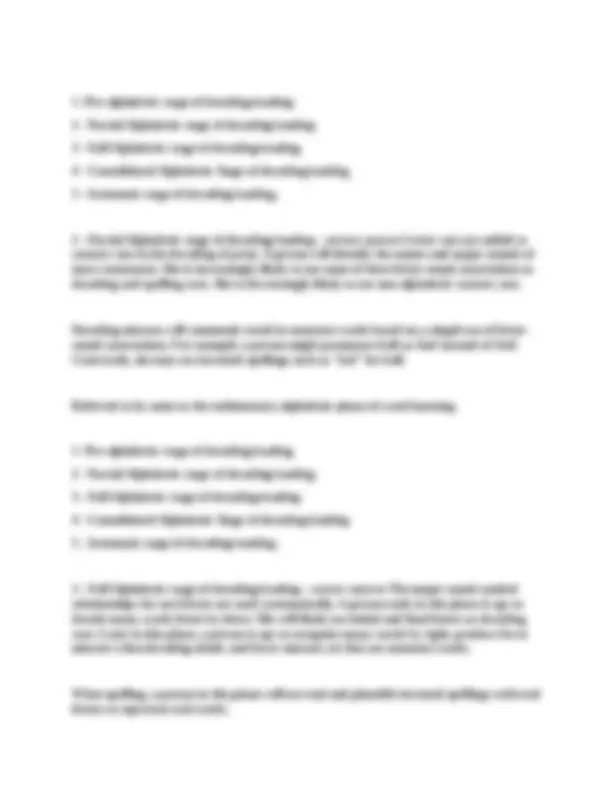
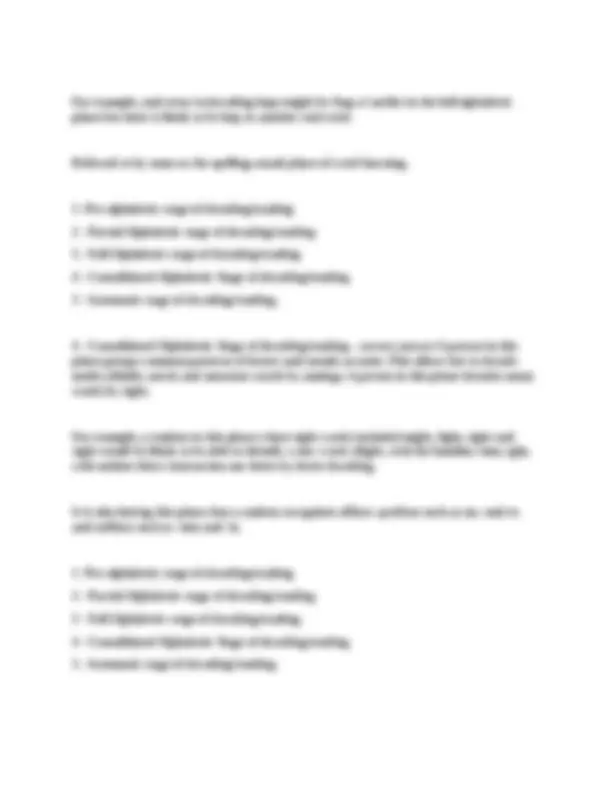
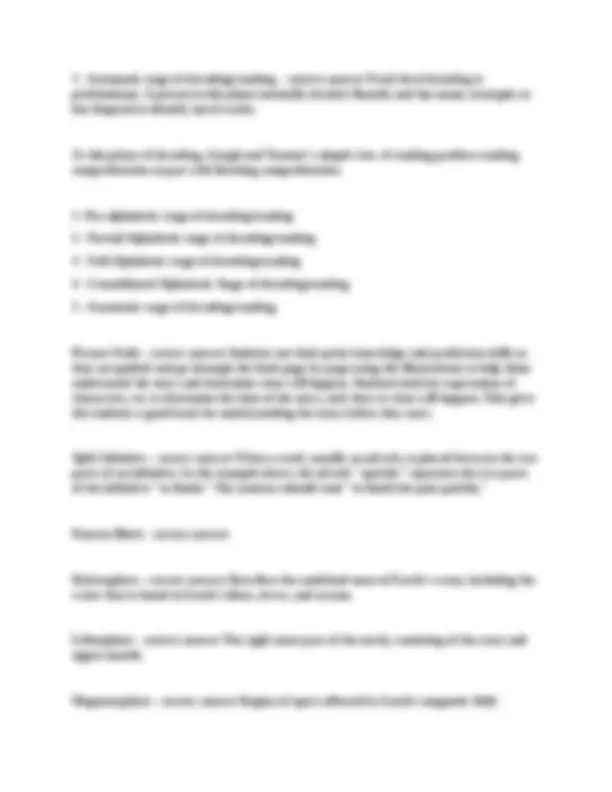
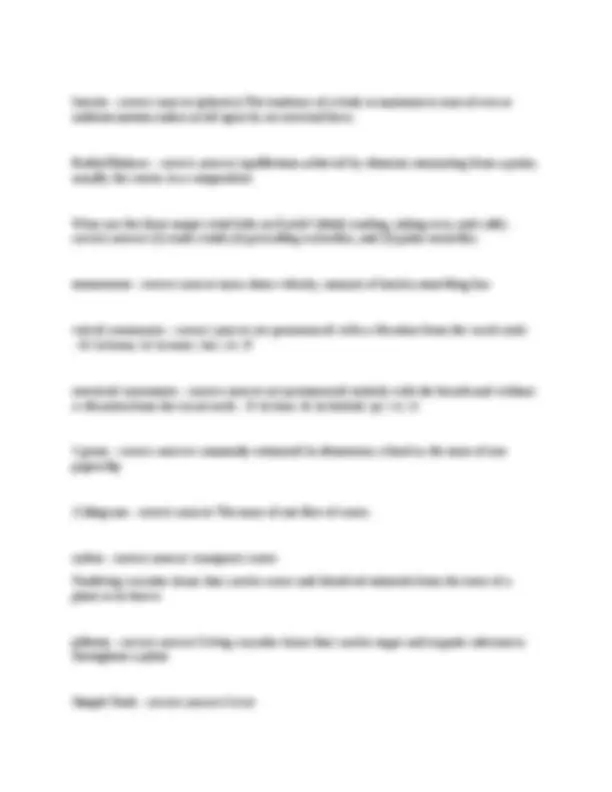
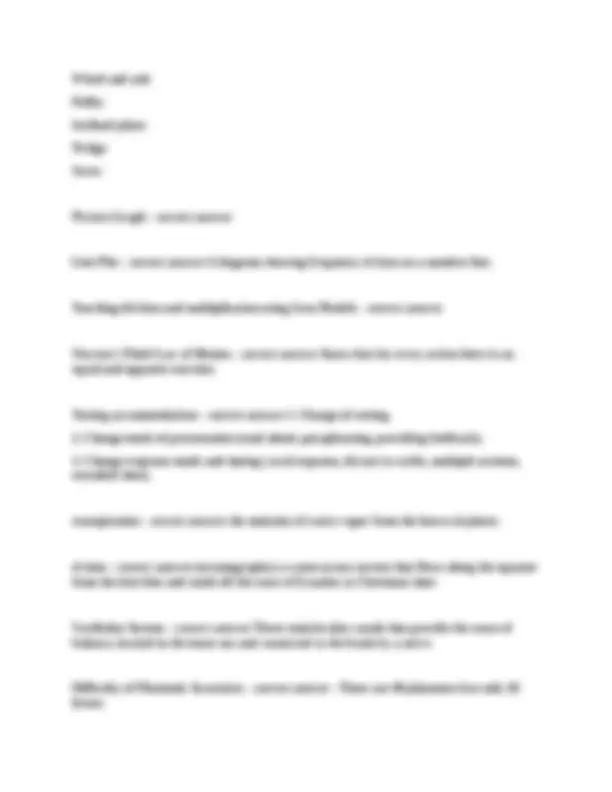
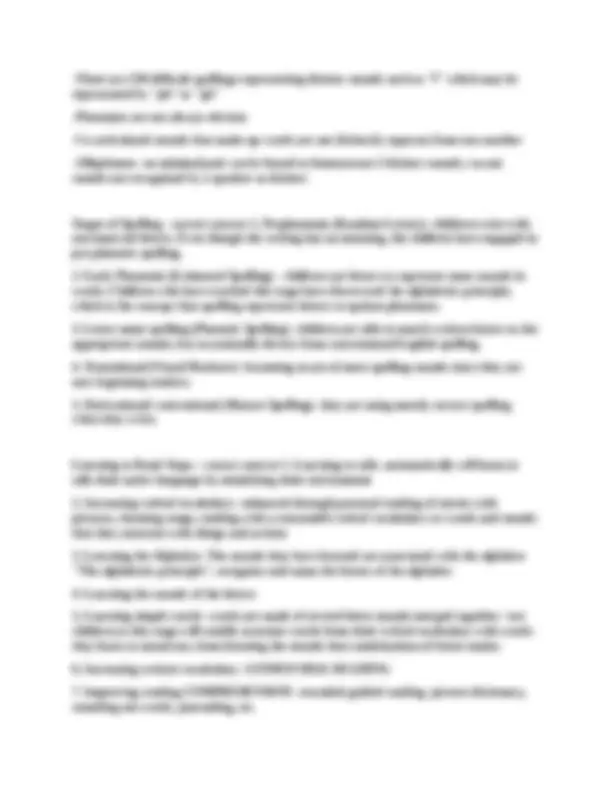
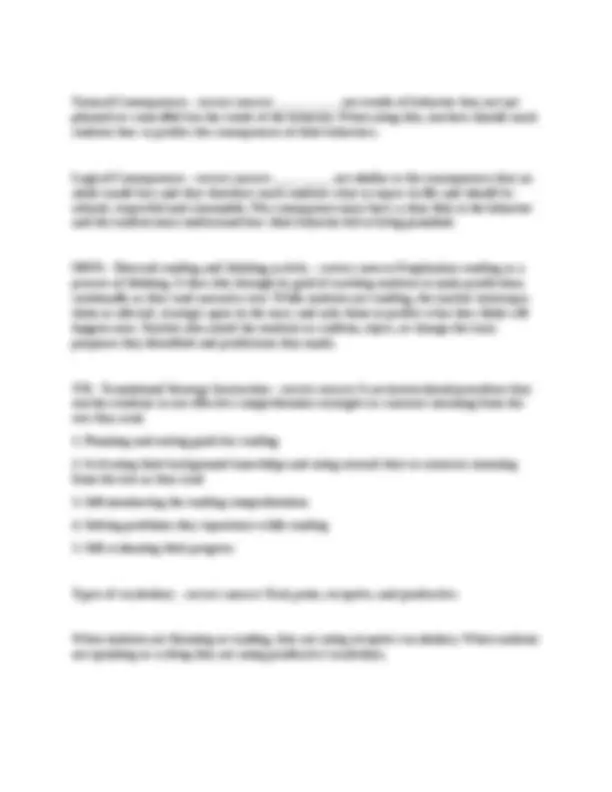
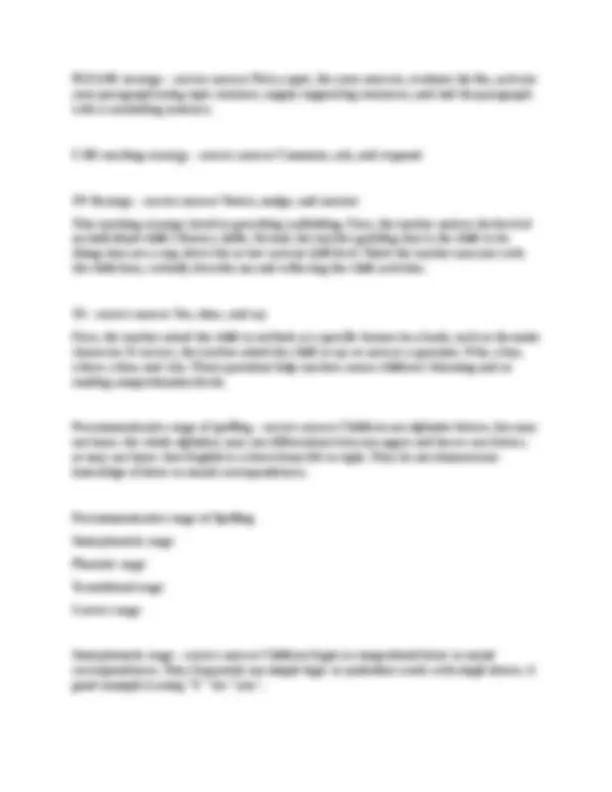
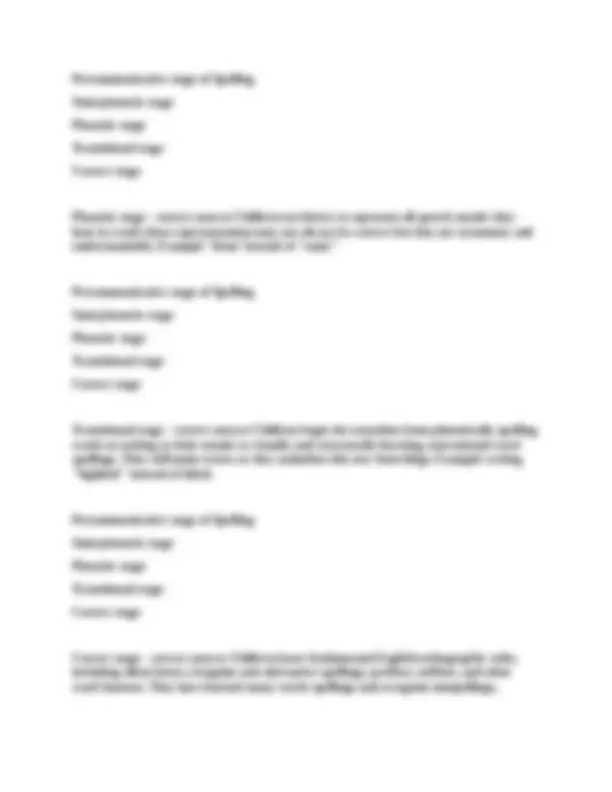
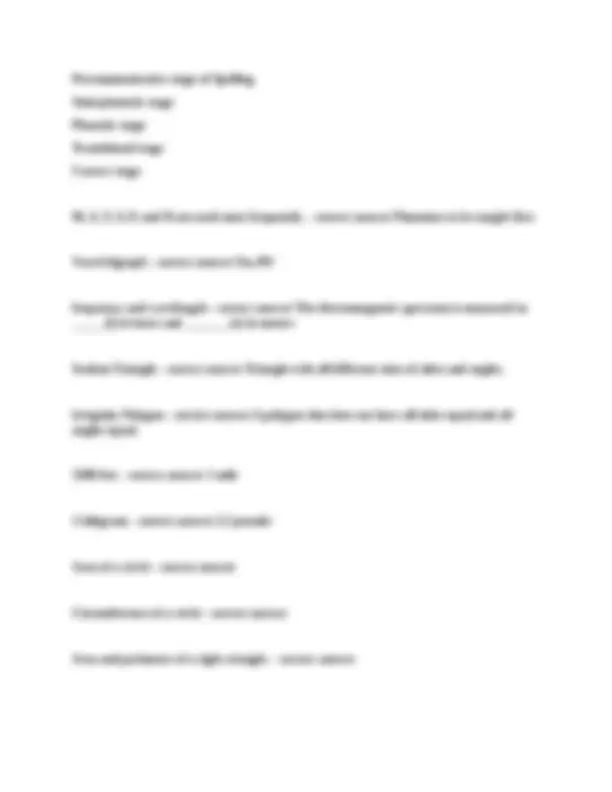
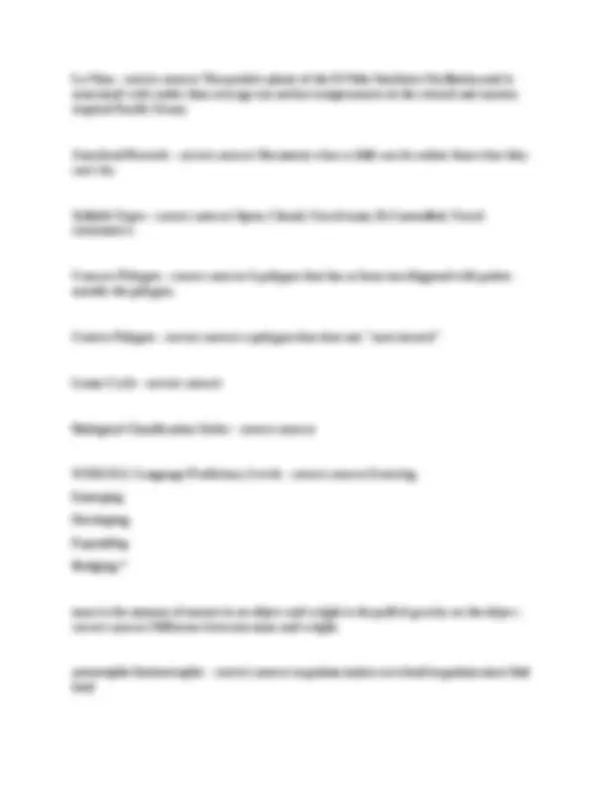
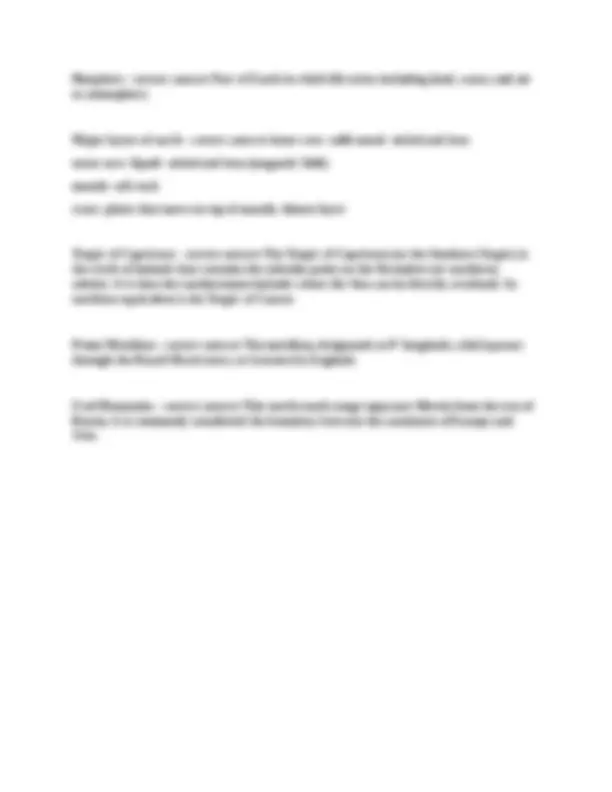


Study with the several resources on Docsity

Earn points by helping other students or get them with a premium plan


Prepare for your exams
Study with the several resources on Docsity

Earn points to download
Earn points by helping other students or get them with a premium plan
Community
Ask the community for help and clear up your study doubts
Discover the best universities in your country according to Docsity users
Free resources
Download our free guides on studying techniques, anxiety management strategies, and thesis advice from Docsity tutors
An overview of effective reading instruction, focusing on the five elements of phonemic awareness, phonics, fluency, vocabulary, and comprehension. It also covers various techniques for improving reading skills, such as phoneme isolation, invented spelling, and ways to enhance fluency and comprehension.
Typology: Exams
1 / 47

This page cannot be seen from the preview
Don't miss anything!








































Diagraph - correct answer Two letters that spell one sound (sh, ch) Blend - correct answer Two or more consonants, when combined make a certain sound and two sounds are heard (bl). Dipthong - correct answer Two vowels, when combined make a certain sound and not necessarily the sound of either vowel present (oy, ow). Onset - correct answer The initial phonological unit of any word (e.g. c in cat). Rime - correct answer The string of letters that follow the initial phonological unit, usually a vowel and final consonants (e.g. at in cat). Guided Reading - correct answer Step between shared reading and independent reading. Usually has small groups/read independently/teacher support through discussion, strategies, and vocabulary. Reciprocal Teaching - correct answer An instructional activity in which students become the teacher in small group reading sessions. Teachers model, then help students learn to guide group discussions using four strategies: 1) summarizing, 2) question generating, 3) clarifying, and 4) predicting. Once students have learned the strategies, they take turns assuming the role of teacher in leading a dialogue about what has been read. Cardinal Numbers - correct answer Counting numbers. Ordinal Numbers - correct answer Order or rank. 1st, 2nd, 3rd. Nominal Numbers - correct answer Name - zip code or player on a team.
Additive Identity Property - correct answer Like looking in a mirror. 4+0= Associative Property of Addition - correct answer the way in which you group three or more numbers when adding does not change their sum - a + (b + c) = (a + b) + c Commutative Property of Addition - correct answer a + b = b + a Distributive Property - correct answer a(b + c) = ab + ac Congruent Shape - correct answer If one shape can become another using turns, flips and/or slides. Rhombus - correct answer A parallelogram with opposite equal acute angles, opposite equal obtuse angles, and four equal sides. Any parallelogram with equal sides, including a square. Seriation - correct answer Sequencing objects from first to last. Partitioning - correct answer The mental activity of slicing the length of an object into equal-sized units. Transitivity - correct answer If object A is longer than object B and object B is longer than object c, then object a is longer than object c. Rote Counting - correct answer Young children begin to learn to count by saying numbers in the correct order without any sense of one-to-one correspondence. Rational Counting - correct answer When a child learns to count with one-to-one correspondence.
Phoneme Blending - correct answer 1st best strategy for phonemes. Listen to a sequence and combine. "What word is /r/ /u/ /g/?" Phoneme Segmentation - correct answer 2nd best strategy for phonemes. Break up a word into sounds (can tap or count). "How many sounds are in the word cat? /c/ /a/ /t/" (3) or What are the sounds in the word cat? Phoneme Deletion - correct answer What is left when a phoneme (sound) is removed. "Tell me bike w/o the /b/. (ike) Phoneme Addition - correct answer Make a new word by adding a phoneme. "Tell me a word you will have if you add /s/ to mile." (Smile) Phoneme Substitution - correct answer Change out a phoneme. "The word is map. Change the /p/ to /t/. What is the word?" (mat) When teach phonological awareness? - correct answer The earlier the better! Larger gains for at-risk readers. Invented spelling - correct answer Similar to segmenting phonemes (but now representing with letters). More like phonetic spelling. Good first step for kids 4-7. Phonics - correct answer Letter/sound correspondences. Graphemes - correct answer Letters Alphabetic Principle - correct answer Writing system design that associates phonemes with letters of an alphabet. Alphabetic Understanding - correct answer Understanding that written words are composed of letters related to phonemic segments of the words of oral language.
Spelling & Phonics - correct answer 87% of words can be handled with phonics ( phonemes total). Phonological Awareness (not the same as phonemic awareness). - correct answer An exclusively oral language activity. A broad skill that includes identifying and manipulating units of oral language - parts such as words, syllables, and onsets and rimes. Children are able to identify and make oral rhymes, can clap out the number of syllables in a word, and can recognize words with the same initial sounds like 'money' and 'mother. Can involve work with rhymes, words, syllables, onsets/rimes. Includes intonation, alliteration, etc. Active Listening - correct answer Providing the speaker with feedback that indicates the message is being received and is understood. Not evaluation, opinion or advice. Attitude of accepting another person. Irregular Spelling - correct answer Graphemes do not map onto phonemes in a regular way (steak). Do not have a regular letter-sound relationship. Simple Sentence - correct answer Independent clause: subject and verb. Complex Sentence - correct answer Independent clause and dependent clause. Compound Sentence - correct answer Two independent clauses. Compound-Complex Sentence - correct answer A combination of a complex and a compound sentence. Decomposing Numbers - correct answer Break down numbers into their sub-parts. (Taking a standard number and changing it into expanded form). Composing Numbers - correct answer Subparts into a whole. (Taking an expanded number and changing it to standard notation).
Frustrational Reading Level - correct answer Less than 90% accuracy. Ways to improve fluency: - correct answer Guided oral reading; four rereads; modeling fluent reading Ways to improve comprehension: - correct answer Teach strategies (self-monitoring, coop learning, graphic organizers, question answering, summarization, reciprocal teaching, etc.); improve vocabulary. Vocabulary strategies: - correct answer 1) Use resources (dictionaries, thesaurus, etc.)
It is especially helpful with students who have learning disabilities. It is a formative assessment tool in which students are tested briefly once or twice a week, their responses are scored and recorded, and the data is plotted on a graph to be compared with the expected performance level. The graph enables the teacher, parents, and administrators to see quickly how a student's performance compares to learning goals Curriculum-based assessment (CBA) - correct answer This is a particular type of criterion- referenced test in which the test items are taken from the curriculum being taught to the student. This type of test can provide information regarding how well the student is learning the curriculum being taught. Mastery Measurement - correct answer Testing for mastery (90%) of a skill. Cloze Procedures - correct answer Reading testing. Passage in which every nth word is left out. Beneath are three words - the original and two "foils" or words that don't make sense. Curriculum Map - correct answer Sketch out days/times spent on what content and then design backwards. Most effective tools for emergent readers - correct answer Predictable books. Five components of language development - correct answer Phonology, morphology, syntax, semantics, pragmatics. Phonology - correct answer Language sounds (44 phonemes). System of or study of rules about sounds and sound combinations. Morphology - correct answer Internal structure and formation of words. Syntax - correct answer Grammar of language. Systems for putting words into phrases and sentences.
Isosceles - correct answer A triangle that has 2 equal sides. Trapezoid - correct answer Quadrilateral plane figure having two parallel and two nonparallel sides Discrete objects - correct answer Objects that can be counted to find out "how many" are in the group. Length based models - correct answer Lengths of connecting cubes, for example. Symmetry - correct answer The correspondence in size, shape, and relative position of parts on opposite sides of a median line or about central axis. Also referred to as formal balance. Inverse relationship in measuring - correct answer The smaller the measurer, the more times it is used to cover a given length. Idiom - correct answer A common, often used expression that doesn't make sense if you take it literally. Scarcity - correct answer The condition that results from society not having enough resources to produce all the things people would like to have. Sociology - correct answer The study of humans as they interact in groups. Anthropology - correct answer The study of cultures as they have changed and developed over time, as they exist now and as they compare to each other. Language, literature, art, music, law, etc. Folktales, songs, games, foods, holidays, customs, traditions. Economics - correct answer Patterns/systems by which various groups of people use their resources to satisfy their needs and wants.
Values Clarification - correct answer An approach to values education that teaches children a process for developing their own values. Phases of Physical Development - correct answer 1 - Reflexive Movement: Involuntary movment in reaction to stimuli. 2 - Rudimentary Movement: Movements that are basic for survival and lifelong activity (moving the head/trunk, rolling over, sitting, crawling, standing, walking - progressive sequence). 3 - Fundamental Movement. After two years - basic fundamental movements. Running, jumping, throwing catching, manipulation. 4 - Sports-related Movement: Prior movements are refined and combined. Equal progress in both fine and gross motor capabilities. Manipulation - correct answer Control of objects with hands and feet. Physical skill most important to writing and schoolwork. Stage 4, where more complex language is produced though grammatical errors are common. - correct answer Intermediate Fluency Second Language Acquisition Stage 1 - Preproduction: - correct answer Has minimal comprehension. Does not verbalize (silence). Nods "Yes" and "No." Draws and points. Show me ... Circle the ... Where is ...? Who has ...? Second Language Acquisition Stage 1 - Pre Production Second Language Acquisition Stage 2 - Early Production Second Language Acquisition Stage 3 - Speech Emergence
Bridging * Second Language Acquisition Stage 3 - Speech Emergence: - correct answer Has good comprehension. Can produce simple sentences. Makes grammar and pronunciation errors. Frequently misunderstands jokes. Why ...? How ...? Explain ... Questions requiring phrase or short-sentence answers Second Language Acquisition Stage 1 - Pre Production Second Language Acquisition Stage 2 - Early Production Second Language Acquisition Stage 3 - Speech Emergence Second Language Acquisition Stage 4 - Intermediate Fluency Second Language Acquisition Stage 5 - Advanced Fluency: Entering Emerging Developing Expanding Bridging * Second Language Acquisition Stage 4 - Intermediate Fluency - correct answer Has excellent comprehension. Makes few grammatical errors. Starts to understand jokes. What would happen if ...? Why do you think ...?
Questions requiring more than a sentence response Second Language Acquisition Stage 1 - Pre Production Second Language Acquisition Stage 2 - Early Production Second Language Acquisition Stage 3 - Speech Emergence Second Language Acquisition Stage 4 - Intermediate Fluency Second Language Acquisition Stage 5 - Advanced Fluency: Second Language Acquisition Stage 5 - Advanced Fluency: - correct answer Near-native level of speech Decide if ... Retell ... Second Language Acquisition Stage 1 - Pre Production Second Language Acquisition Stage 2 - Early Production Second Language Acquisition Stage 3 - Speech Emergence Second Language Acquisition Stage 4 - Intermediate Fluency Second Language Acquisition Stage 5 - Advanced Fluency: Entering Emerging Developing Expanding Bridging * Print Concepts - correct answer Concepts associated with printed language, such as directionality (reading left to right and top to bottom), ideas of word or letter, book handling, voice-print matching, and punctuation. Stages of Reading Development - correct answer 1 - Emergent Readers: Understand print concepts
Orthography - correct answer The art or study of correct spelling according to established usage. Homonym - correct answer Multiple meanings to same word. (Spruce tree/Spruce up) Homophone - correct answer Words that sound alike. (to, two, too) Homograph - correct answer Same spelling, different meanings, different pronunciation. (desert = abandon desert = area of land) Expository Writing - correct answer To explain, describe or inform. Text Complexity - correct answer Triangle --> Quantitative measures, qualitative measures, Reader and Task considerations. QUALITATIVE - text attributes that can only be evaluated by the person who is reading the book or passage. Levels of meaning: Is the purpose explicitly stated, or is it vague? Does it have a single level of meaning vs. multiple purposes? Clarity and conventions of language: Is the language clear, or is it vague and purposefully misleading? Is the language contemporary and familiar, or is it unfamiliar and archaic? Is the text conversational or academic? Is there wide use of figurative language, idiomatic expressions, etc.?
Is the text cohesive, or does it lack cohesion? Knowledge demands: Is it a single-themed text and relatively simple as opposed to multiple-themed and complex? Does the text deal with common everyday experiences, or does it present experiences that are likely, vastly different from those of the reader? Is the text presented from single or multiple perspectives? Are there frequent changes in the setting? How many, if any, references to other texts does the text contain? Structure: How is the text organized: chronologically or in another logical fashion? Is the text randomly arranged with complex and loosely connected content? Do the structure and organization make sense? Are sections and features clearly labeled? Is the text free of unnecessary distractions? Visual device complexity: Are graphical devices relatively simple, or are they complex? Are the graphics "for show" or to help the student understand the material being presented? QUANTITY - There are dozens of formulas used to figure text difficulty. Many of these formulas consider only two factors: They look at sentence length and the number of difficult or unfamiliar words, or they look at sentence length and syllable count. The factors involved in text complexity include the length and structure of sentences. The number of complex and compound sentences in a text is a quantitative factor because it involves an amount, or quantity. READER/TASK - Each reader brings different skills, background, and motivation to the act of reading. For example, a student who is interested in the topic being read is likely to bring more background knowledge to the reading task and want to learn more.
Developing...Meaning in text with words, spaces, sentences Developing Discovery...Expanded statements, moving toward more development Beginning...General topic developed with expanded list, simple sentences, some conventions Novice......Specific topic with supporting details and expansions,simple organization Bridging...Develops several ideas on surface of specific topic, some coherence and organization, Bridging Discovery Expanding...Explores topic with focus, beyond surface, control of some aspects of writer's craft Independent...Developed focus, sufficiently adequate craft Fluent......Expanded focus, purposeful crafting, moving toward complexity Sophisticated...Insightful, expanded development with perspective, complexity, and significance, well-crafted Code Switching - correct answer For example, the difference between the way a child may speak while making a presentation as compared to speaking with their friends. Dialect - correct answer A local variety of a language, usually understood by speakers of the same language, often without a standardized grammar or spelling, used mostly for non formal purposes in a local community or among people coming from the same community but living in another community than that they came from. Speech Register - correct answer A way of speaking or writing including vocabulary, syntax and pronunciation (or spelling) chosen by individuals to express themselves depending on the circumstances they speak: high register (formal occasions like parliamentary speech, official documents, celebrations), low register (informal occasions, conversations among family or friends' group). There are also many in-between registers and specialized occasions like religious services, sport events, and so on.
Figuring out unknown Vocabulary/Phrases - correct answer Use context, syntax, and/or knowledge of roots/affixes. Three Tiers of Vocabulary - correct answer Pyramid - Bottom to top... Tier 1: Common, Known Words. Examples: big, small, house, table, family. Tier 2: High-Frequency Words (aka Cross-Curricular Vocabulary) High utility or academic. Examples: justify, explain, expand, predict, summarize, maintain Tier 3: Low-Frequency, Domain-Specific words. Examples: isotope, tectonic plates, carcinogens, mitosis, lithosphere Subitizing - correct answer The ability to 'see' a small amount of objects and know how many there are without counting. It's what tells you what number you roll on a six sided dice - most adults no longer have to count the pips after playing board games for a while. Rectangular Array - correct answer Area Model - correct answer A model for math problems where the length and width are configured using either multiplication, percentage or fractions to figure out the size of an area. 84 times 12 would be a table with 80 and 4 on the top and 10 and 2 on the side. The simple multiplication would be done in each of the four inside boxes and then added to get the answer. Partitioning in Division - correct answer 64 ÷ 4 = (40 + 24) ÷ 4 = (40 ÷ 4) + (24 ÷ 4) = 10 + 6 = 16 Repeated Addition - correct answer The result of multiplication is the total number (product) that would be obtained by combining several (multiplier) groups of similar size (multiplicand). The same result can be obtained by _____________. ... For example, 4+4+4+4+4+4+4=28 is equivalent to the multiplication equation 7*4=28.